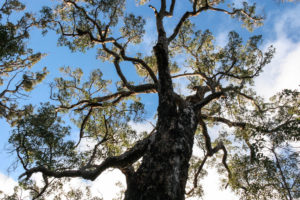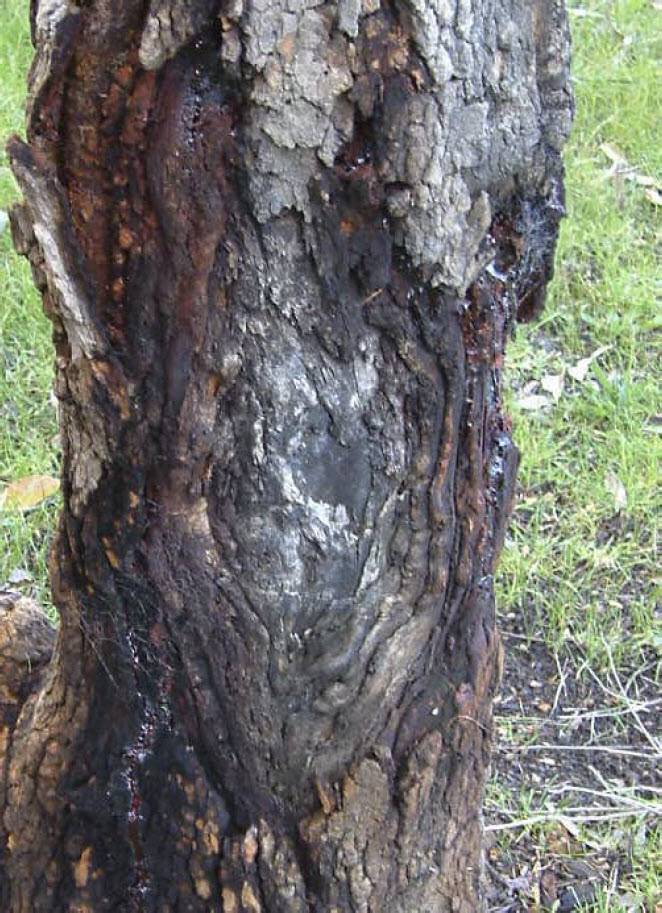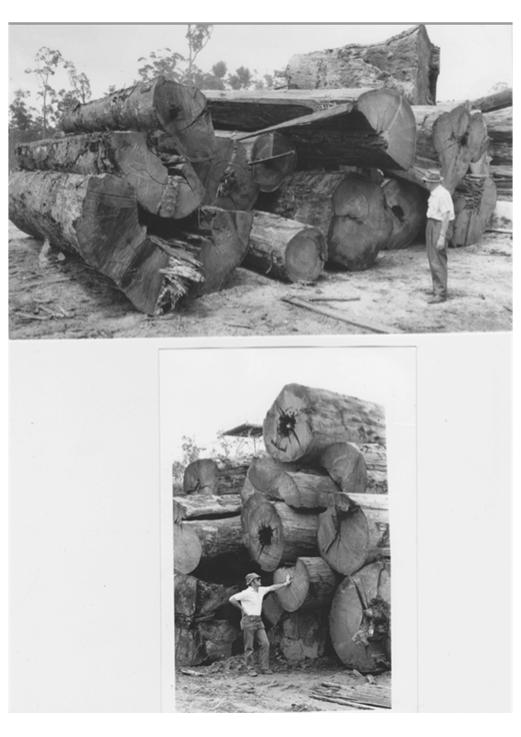Beth Schultz beth.schultzwa@gmail.com March 2022
Marri (Corymbia calophylla) is the most widespread forest tree species in WA’s south-west. It is a keystone species and provides habitat for many species such as White-tailed black cockatoos.

Marri trees are now infested with diseases, Quambalaria coyrekup, which can kill the trees, and Quambalaria piterika, which attacks the buds and nuts. These fungi occur most frequently in disturbed forest such as forest impacted by logging and roading. Marri trees are dying across their range in all tenures and categories of use.

From 1975 to 2021,10.6 million cubic metres (13 million tonnes) of marri logs were sold, 10 million cubic metres (12.4 million tonnes, 95 per cent) as chiplogs. Most of the logs came from old growth trees.
Karri/marri woodchips were 7th of the eight grades of hardwood woodchips bought by Marubeni Corporation of Japan. Of the two species, karri and marri, karri is better for paper production, which means marri woodchips are very low grade indeed. When high quality bluegum woodchips began to come on stream, Marubeni stopped buying marri woodchips in November 2001, and from 2002, the volume of marri chiplogs declined significantly.
Since then, the Forest Products Commission (FPC) has been trying to find new markets for marri so that clearfelling of karri/marri and jarrah/marri forest can continue and it can increase its throughput. With no market for marri, marri trees have simply been ringbarked or poisoned in the hope that they will be replaced by jarrah.
Under the Forest Management Plan 2004-2013, 196,000 cubic metres of marri ‘all bole logs’ could be sold annually. Under the Forest Management Plan 2014-2023, 140,000 to 254,000 cubic metres of marri ‘all bole logs’ can be sold annually. These volumes have never been achieved.
Long despised by foresters who called it a weed tree, marri is now much sought after as a beautiful timber. It is a tragedy that it has taken us a century to realise its true value as a timber and its importance in south-west forest ecosystems.

Old growth marri chiplogs (‘waste’) at the WA Chip & Pulp (WACAP) chipmill near Manjimup 1979
Marri log production 1969-1970 – 2021-2022
| Year | Marri sawlogs (m3) | Marri chiplogs (m3) |
|---|---|---|
| 1969-70 | 17,799 | - |
| 1970-71 | 26,682 | - |
| 1971-72 | 26,383 | - |
| 1972-73 | 19,985 | - |
| 1973-74 | 18,389 | - |
| 1974-75 | 9485 | - |
| 1975-76 | 2,421 | 77,655 |
| 1976-77 | 4,324 | 241,207 |
| 1977-78 | 13,851 | 329,190 |
| 1978-79 | 7,238 | 353,928 |
| 1979-80 | 10,961 | 439,666 |
| 1980-81 | 11,689 | 386,664 |
| 1981-82 | 9,120 | 255,069 |
| 1982-83 | 7,626 | 284,670 |
| 1983-84 | 8,702 | 339,389 |
| 1984-85 | 13,093 | 400,828 |
| 1985-86 | 19,675 | 428,514 |
| 1986-87 | 14,202 | 444,076 |
| 1987-88 | 5,061 | 551,673 |
| 1988-89 | 16,893 | 459,775 |
| 1989-90 | 34,998 | 376,076 |
| 1990-91 | 122,703 | 349,820 |
| 1991-92 | 55,132 | 424,121 |
| 1992-93 | 41,290 | 420,548 |
| 1993-94 | 20,206 | 405,111 |
| 1994-95 | 12,165 | 505,655 |
| 1995-96 | 9,667 | 492,484 |
| 1996-97 | 7,232 | 449,439 |
| 1997-98 | 5,925 | 413,327 |
| 1998-99 | 10,268 | 317,596 |
| 1999-00 | 15,015 | 319,259 |
| 2000-01 | 10,349 | 258,119 |
| 2001-02 | 5,361 | 102,618 |
| 2002-03 | 8,401 | 56,237 |
| 2003-04 | 10,437 | 37,750 |
| 2004-05 | 4,838 | 2,907 |
| 2005-06 | 9,407 | 5,572 |
| 2006-07 | 12,542 | 3,147 |
| 2007-08 | 14,366 | 3,973 |
| 2008-09 | 3,885 | 5,349 |
| 2009-10 | 10,696 | 1,977 |
| 2010-11 | 13,103 | 2,310 |
| 2011-12 | 5,792 | 1,151 |
| 2012-13 | 3,691 | 10,218 |
| 2013-14 | 2,767 | 5,836 |
| 2014-15 | 3,517 | 9,375 |
| 2015-16 | 4,959 | 7,734 |
| 2016-17 | 2,363 | 15,040 |
| 2017-18 | 2,543 | 9,863 |
| 2018-19 | 1,044 | 9,479 |
| 2019-20 | 28 | 15,096 |
| 2020-21 | 1,976 | 10,774 |
| 2021-22 | 4,086 | 19,829 |
| Total | 734,331 m3 | 10,060,094 m3 |
From 1975-76, when the woodchip industry began, in Western Australia, until 2021, 10,718,909 m3 of marri logs were sold, 94 per cent as chiplogs. Most of the logs came from old growth trees. 10.6 million m3 of marri logs equal 13 million tonnes (1 m3 of marri logs weighs 1.24 tonnes). The Japanese stopped buying marri chiplogs in November 2001.
Sources:
Forests Department (WA), Marri Wood Chip Project Environmental Impact Statement, undated [1973], Forests Department, Annual Reports 1969-70 – 1984-85
Department of Conservation and Land Management, Annual Reports 1985-86 – 1999-2000
Forest Products Commission, Annual Reports 2000-2001 – 2018 -2019; FPC Statistics 2019-2020, 2020-2021, 2021-2022
More information about canker disease can be found in these two documents: